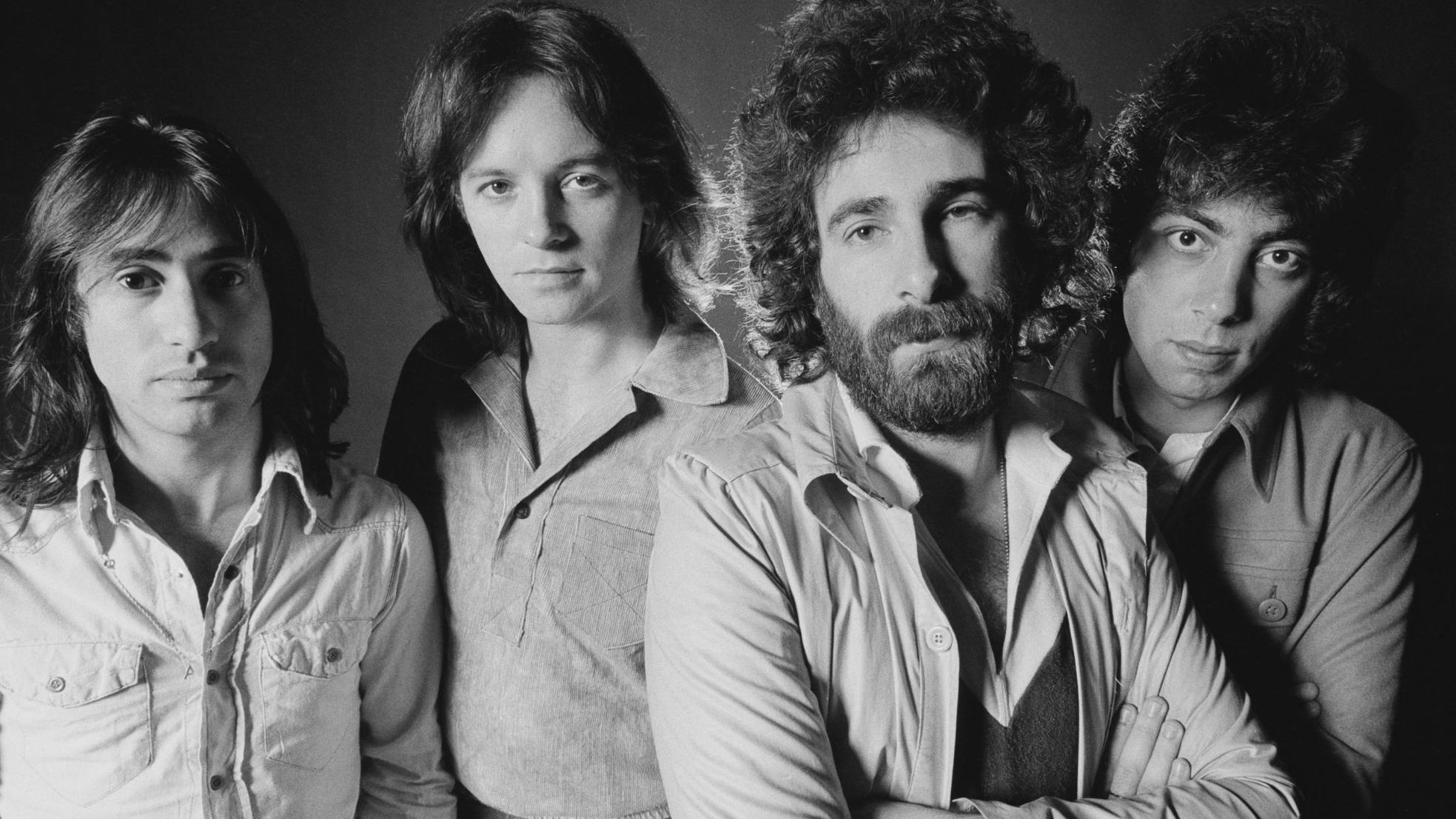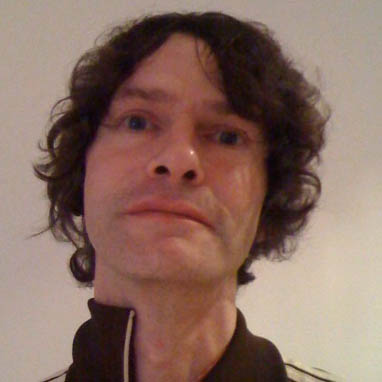“For about three days, just listening to this thing, I was looking at Kevin and the other two guys saying ’What have we created? This is brilliant’“: The difficult bossa nova birth and enduring brilliance of 10CC’s I’m Not In Love
10cc’s classic turned fifty this year

Graham Gouldman has been talking about the enduring appeal of 10cc’s I’m Not In Love.
In an interview with NME, the 79-year-old songwriter said of the track: “It’s hard to say what the secret of I’m Not in Love’s enduring success is. There are certain songs that I’ve written, or co-written, that are imbued with extra magic that on the surface doesn’t appear to be there.”
“Somehow, they have this special quality that makes them different from other songs that you might think are equally good or even better. I’m Not in Love has this hypnotic quality about it, particularly the opening chords, which are just beautiful. When it appeared in Guardians Of The Galaxy, that gave it a boost, particularly with a younger audience.”
In the interview, Gouldman also praised Doja Cat’s Shutcho, which sampled the track: “I don’t mind these things. It’s great if it works artistically, and it also helps to bring the music of 10cc to a different audience that wouldn’t have normally bothered with it.”
The track, which first appeared on the group’s 1975 album The Original Soundtrack before being released as a single in May that year, remains an artistic high point for the band, even for 1970s music as a whole. Its story is well known. The lyrical inspiration came from Eric Stewart’s wife, who complained to her husband that he didn’t tell her he loved her very often.
In a 2005 interview with Sound On Sound, Stewart opened up about how that led to the song: “I had this crazy idea in my mind that repeating those words would somehow degrade the meaning, so I told her 'Well, if I say every day "I love you, darling, I love you, blah, blah, blah," it's not gonna mean anything eventually.'
"That statement led me to try to figure out another way of saying it, and the result was that I chose to say 'I'm not in love with you,' while subtly giving all the reasons throughout the song why I could never let go of this relationship."
Want all the hottest music and gear news, reviews, deals, features and more, direct to your inbox? Sign up here.
Gouldman helped Stewart finish the basic framework of the song, which at this stage had a bossa nova rhythm. Famously, the other half of 10cc – Kevin Godley and Lol Creme – disliked the song, particularly Godley. Stewart: “He said 'No. It's not working, man. It's just crap, right? Chuck it.' And we did. We threw it away and we even erased it, so there's no tape of that bossa nova version.”
It was the secretary at Strawberry Studios, Kathy Redfern, who saved I’m Not In Love from pop’s trashcan. “Walking around Strawberry each day, I kept hearing people singing the melody 'I'm not in love…,” Stewart remembered.
“And I kept going back to the band and saying, 'There's something more with this song. We've not got it yet, but I don't want to lose this song, because it's got people hooked.' Then the secretary, Kathy, said, 'Why didn't you finish that song? I really love it. It's the nicest thing you've ever done.'”
In the end, Godley and Creme agreed to return to the song on the proviso they tried it with just voices. This led the band to create a vocal wall, built by Godley, Creme and Gouldman each singing ‘aaah’ 16 times for each note on the chromatic scale. Stewart then made 12 tape loops – the idea being that they would be fed through a separate channel on the mixing desk.
“For about three days, just listening to this thing, I was looking at Kevin and the other two guys saying 'What the fuck have we created? This is brilliant.'” Eric Stewart recalled to Sound On Sound. “
We knew we had something very, very special, very different. I'd never heard anything like it in my life. I mean, the Beach Boys were seriously good at harmonies, but they hadn't, as far as I knew, done anything this way. It was a very, very unusual sound.”
In 2025, all this would be worked out on a laptop screen, but fifty years ago, the tape loop ‘choir’ then had to be physically ‘played’ by the band on the mixing desk. In an interview with MusicRadar earlier this year, Graham Gouldman said: "So we all actually physically played the board, going up and down with the faders and we did a few takes because some of them sometimes didn't feel right. You couldn't actually put your finger on it, but we thought ‘Let's do another take’ and then… We decided that this was it and we’d got it.”
"It was really creative and very exciting to be present while this thing was growing, rather than simply hearing the whole thing finished in one go. Adding each voice… And hearing one voice next to the other and then trying to harmonise with them. It was fantastic."
The band had originally thought that, having created the 'choir', the backing track - of a Fender Rhodes, rhythm guitar and bass drum - could then be dispensed with. But when the band heard what they’d created, they decided to keep them.
“I think it's because the backing track had lots of air in it, if you know what I mean?” Kevin Godley said to Music Radar earlier this year. “It was very sparse. So what we were trying to do was fill that air with something that sounded like air to a degree. And so it all began to make sense."
The chef’s kiss was the break when Gouldman’s bass drops down and Redfern – who, lest us forget, had originally saved the track - added her whispered ‘big boys don’t cry’ line.
“That was Lol’s idea,” says Gouldman. “’Why don't we have someone saying ‘big boys don't cry’, but it's got to be a girl. And where is ‘a girl’? Kathy Redfern. She got the job. And I think she got it really quickly as well. I mean, like two or three takes. And there it was. And it worked great, obviously.”
“It just clinched it and made the song even more original,” Stewart recalled. “Poor Kathy was bemused. She didn't want to go in the studio, we had to drag her in, but she was very, very sweet and we eventually persuaded her: 'You've just got to whisper. Just whisper, don't worry. You're not singing, just talking. Use your best telephone voice.' She had a gorgeous voice, and there it is; it's on the record... and she got a gold record for it, too."
I’m Not In Love reached Number One at the end of June 1975, the exact mid-point of the decade; fitting perhaps, for a record that looked back to the pioneering work of The Beatles and Brian Wilson (particularly Because and Our Prayer, from the then-unreleased Smile) but provided a sneak preview of early 1980s pop. You can see its influence on Trevor Horn’s work – especially Dollar’s Give Me Back My Heart, as well as OMD’s Souvenir and the Korgis’ Everybody’s Got To Learn Sometime.
Aside from being a technical triumph, I’m Not In Love’s huge success also rested on the fact that it felt like a breakthrough on an emotional level, not just for its narrator but for 10cc themselves. The band had long been praised for their perceived cleverness, but there was no irony in I’m Not In Love. Its subject – an emotionally inarticulate man struggling with deep feelings – felt close to home, and the UK record-buying public for the first time warmed to 10cc rather than merely admiring them.
There have been many cover versions over the years, from artists as varied as Irish Eurovision winner Johnny Logan, Fun Lovin’ Criminals and Tori Amos. There’s even a version on Chrissie Hynde’s new album that reworks it as a duet with Brandon Flowers. But I’m Not In Love is primarily an incredible record rather than an incredible song, a reminder when technical limitations brought out creative best in the artists of the time. As Kevin Godley told us earlier this year: "(At that time) the word impossible didn't exist in the studio. It really didn't. If you had an idea of a sound or a way to approach something, there was always a way of doing it. It might take a month to do it…"

Will Simpson is a freelance music expert whose work has appeared in Classic Rock, Classic Pop, Guitarist and Total Guitar magazine. He is the author of 'Freedom Through Football: Inside Britain's Most Intrepid Sports Club' and his second book 'An American Cricket Odyssey' is due out in 2025.
You must confirm your public display name before commenting
Please logout and then login again, you will then be prompted to enter your display name.

